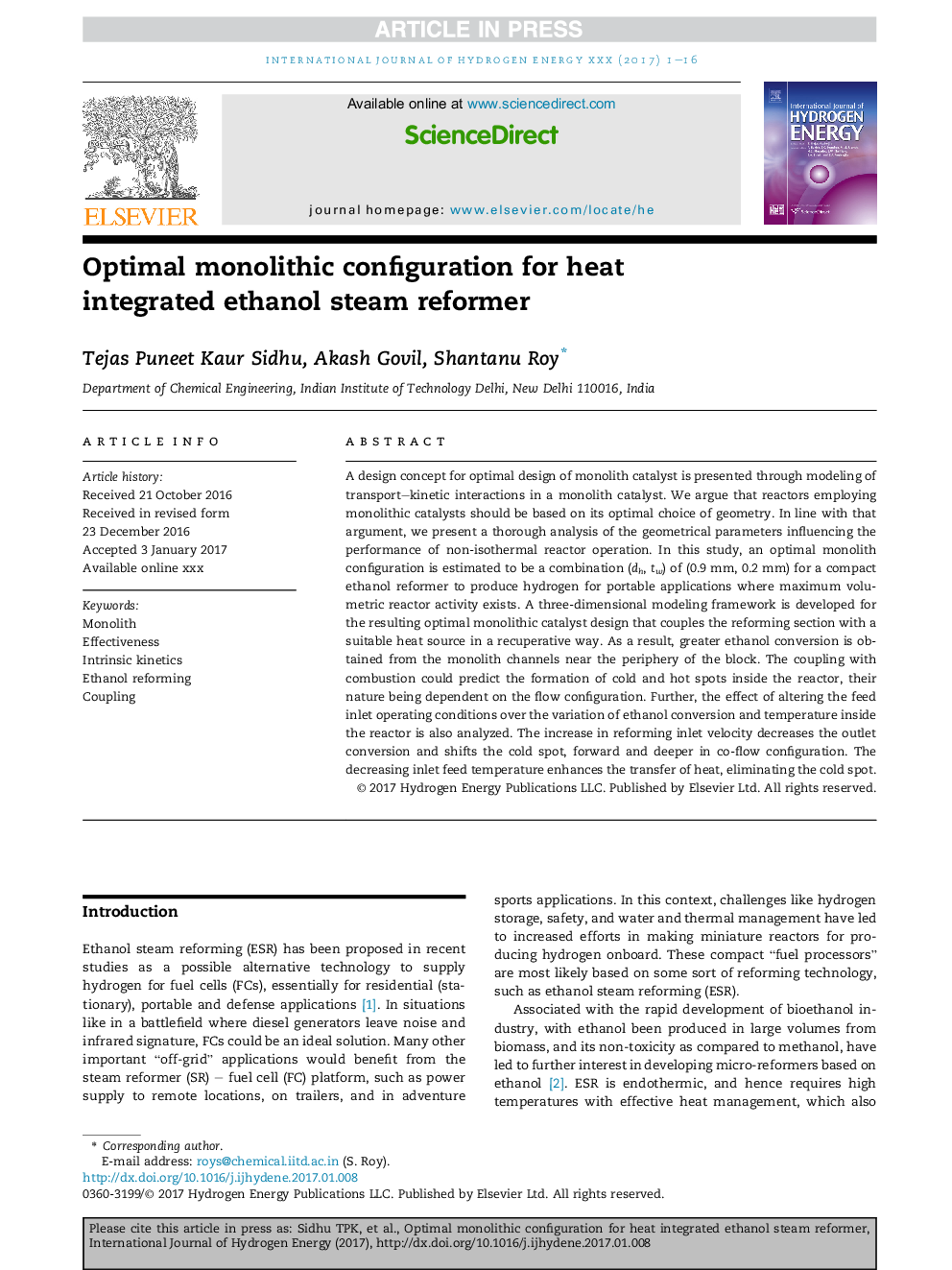| Article ID | Journal | Published Year | Pages | File Type |
|---|---|---|---|---|
| 5148267 | International Journal of Hydrogen Energy | 2017 | 16 Pages |
Abstract
A design concept for optimal design of monolith catalyst is presented through modeling of transport-kinetic interactions in a monolith catalyst. We argue that reactors employing monolithic catalysts should be based on its optimal choice of geometry. In line with that argument, we present a thorough analysis of the geometrical parameters influencing the performance of non-isothermal reactor operation. In this study, an optimal monolith configuration is estimated to be a combination (dh, tw) of (0.9Â mm, 0.2Â mm) for a compact ethanol reformer to produce hydrogen for portable applications where maximum volumetric reactor activity exists. A three-dimensional modeling framework is developed for the resulting optimal monolithic catalyst design that couples the reforming section with a suitable heat source in a recuperative way. As a result, greater ethanol conversion is obtained from the monolith channels near the periphery of the block. The coupling with combustion could predict the formation of cold and hot spots inside the reactor, their nature being dependent on the flow configuration. Further, the effect of altering the feed inlet operating conditions over the variation of ethanol conversion and temperature inside the reactor is also analyzed. The increase in reforming inlet velocity decreases the outlet conversion and shifts the cold spot, forward and deeper in co-flow configuration. The decreasing inlet feed temperature enhances the transfer of heat, eliminating the cold spot.
Related Topics
Physical Sciences and Engineering
Chemistry
Electrochemistry
Authors
Tejas Puneet Kaur Sidhu, Akash Govil, Shantanu Roy,
